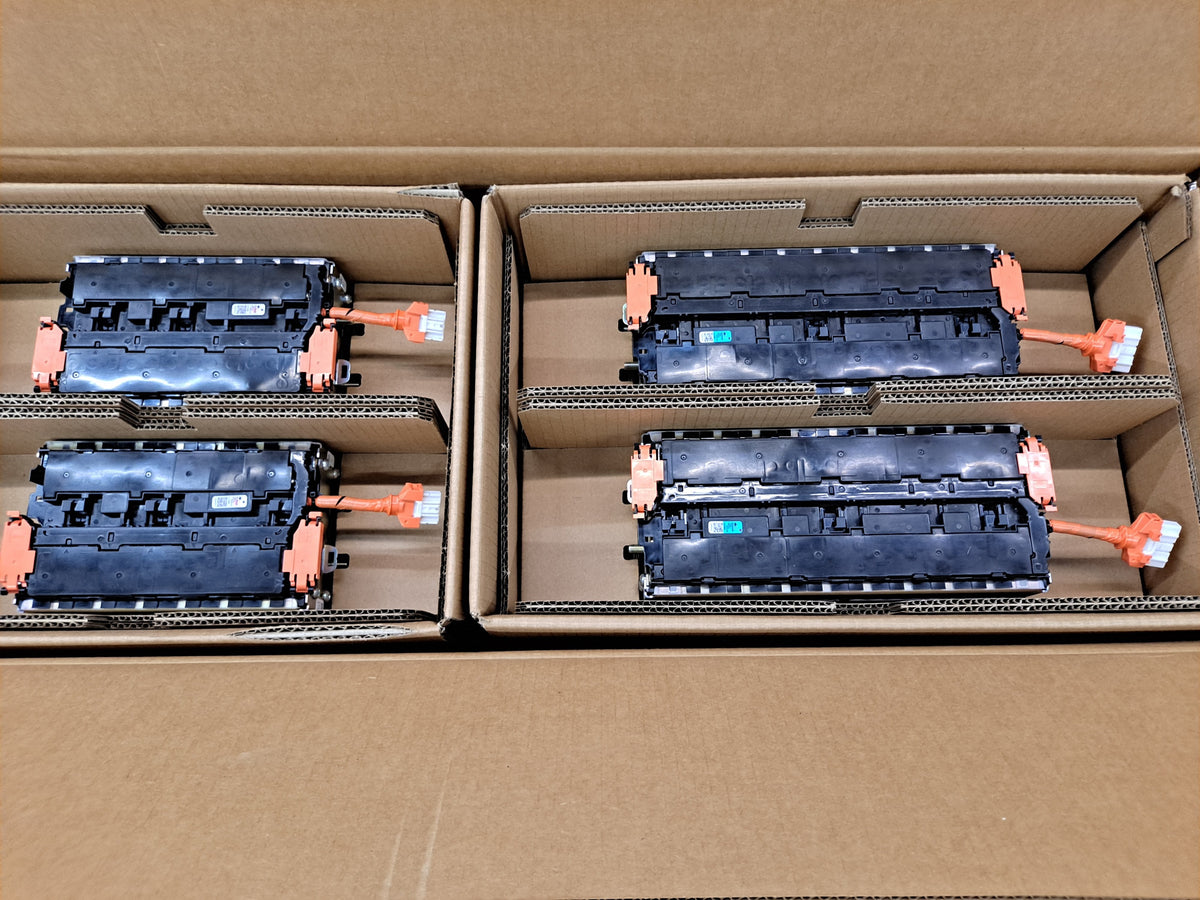@retepsnikrep and I are considering designing a simple battery management system that supports Honda's 3rd generation Insight lithium battery packs. We've discovered that these packs mechanically fit in the G1's OEM IMA battery bay, which makes them an IDEAL candidate for simple lithium conversions. These batteries are currently for sale here at the bargain price of $400, plus ~$40 shipping (CONUS):

These batteries were initially posted by @mmdepace here:

 www.insightcentral.net
www.insightcentral.net
This thread is a continuation, since it's a separate topic. Peter and I are mid-discussion at the time of this writing... I'm going to answer the questions he proposed in said thread here... eventually Peter will probably move those comments here (since our discussion is an offshoot topic).
...
Right now Peter and I are trying to determine how much existing technology we can cobble together to produce this BMS with minimal effort. At this point we HAVE NOT COMMITTED TO BUILDING ANY PRODUCT, so do not purchase batteries if a $440 investment will keep you from paying rent. Right now I'm envisioning this project being sold to verified members that know what they're doing. Eventually we could open it up to more people, but I'm not looking to hold anyone's hand right now.
Full disclosure: I previously began the Linsight project way back in 2015... to date I have not shipped it. Linsight is an incredibly complicated project from a firmware perspective, because it replaces both existing IMA computers. As such, Linsight must handle everything the OEM system handled, plus all the bells and whistles that feature crept into it (e.g. support with Pegasus, manual controllers, car charger support, etc). For the past five years I haven't been able to set aside the time needed to finish Linsight.
This BMS discussion is a much simpler project... at present we're considering leaving the OEM computers in place, and then hacking together our existing designs into a compatible product. This is maybe 5% of the engineering effort compared to Linsight.
...
So with that introduction out of the way, the following posts pick up where Peter and I left off.

NEW! CASE WITH 2x 12s + 2x 18s HONDA INSIGHT MODULES
YOU GET A FULL CASE OF NEW OVERSTOCK HONDA INSIGHT OEM MODULES IN THE ORIGINAL BOX. EACHCASE HAS 2x 12s MODULES AND 2x 18s MODULES. THESE BATTERY MODULES ARE NEW OVERSTOCK FOR HONDA INSIGHT OEM CARS. THEY ARE FULLY TESTED AND GUARANTEED. ALL MODULES ARE RESTING AROUND 3.61-3.65V PER CELL AND...
batteryhookup.com
These batteries were initially posted by @mmdepace here:

G3 Lithium Batteries For Sale Battery Hookup
https://batteryhookup.com/products/new-case-with-2x-12s-2x-18s-honda-insight-modules Capacity is comparatively small to the LTO setups, however the price and physical size are a plus. Allows one to budget for a BMS. One possibility may be to try and work the 20-80% SOC range, while pushing...
This thread is a continuation, since it's a separate topic. Peter and I are mid-discussion at the time of this writing... I'm going to answer the questions he proposed in said thread here... eventually Peter will probably move those comments here (since our discussion is an offshoot topic).
...
Right now Peter and I are trying to determine how much existing technology we can cobble together to produce this BMS with minimal effort. At this point we HAVE NOT COMMITTED TO BUILDING ANY PRODUCT, so do not purchase batteries if a $440 investment will keep you from paying rent. Right now I'm envisioning this project being sold to verified members that know what they're doing. Eventually we could open it up to more people, but I'm not looking to hold anyone's hand right now.
Full disclosure: I previously began the Linsight project way back in 2015... to date I have not shipped it. Linsight is an incredibly complicated project from a firmware perspective, because it replaces both existing IMA computers. As such, Linsight must handle everything the OEM system handled, plus all the bells and whistles that feature crept into it (e.g. support with Pegasus, manual controllers, car charger support, etc). For the past five years I haven't been able to set aside the time needed to finish Linsight.
This BMS discussion is a much simpler project... at present we're considering leaving the OEM computers in place, and then hacking together our existing designs into a compatible product. This is maybe 5% of the engineering effort compared to Linsight.
...
So with that introduction out of the way, the following posts pick up where Peter and I left off.




